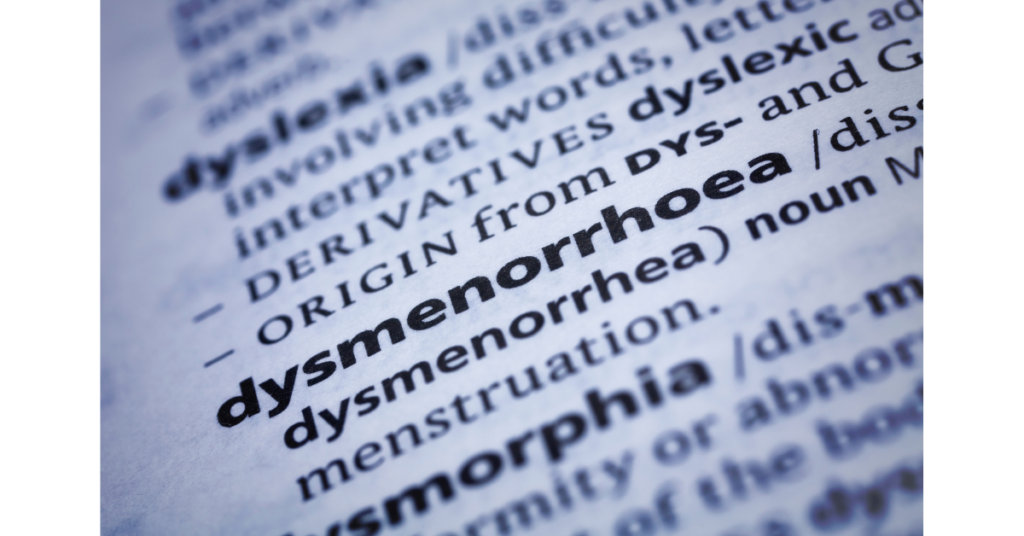What is Dysmenorrhoea?
Also known as period pain, painful periods or menstrual cramps, dysmenorrhoea refers to pain during menstruation. It may be accompanied by menorrhagia (heavy bleeding). There are two types of dysmenorrhoea:
Primary dysmenorrhoea generally occurs anytime from the first period for a couple of years, getting less painful as time goes on.
Secondary dysmenorrhoea is caused by conditions such as endometriosis, uterine fibroids, polycystic ovary syndrome, adenomyosis (cells growing inside the uterus). This pain differs from primary dysmenorrhoea as it starts later in life and often gets worse as time goes on.
(See also our article on Menorrhagia)
Symptoms
Stomach cramps, backache, bloated stomach, nausea, fatigue, and headaches.
Complementary Approach
Do not drink alcohol. Because alcohol interferes with carbohydrate metabolism, it is thought by many nutritionists to make cramping muscle spasms worse. Just one of the liver’s jobs is to metabolise hormones, including oestrogen. The reasoning is that if the liver is busy dealing with the alcohol then it may interfere with its job of metabolising hormones. These theories have not been tested however (1). If levels of oestrogen increase then there is more chance of salt and fluid retention and as a result you will have a heavier menstrual flow.
Nutritional Supplements
The following information does not constitute a prescription or recommended dose – studies have been conducted using the dosages stated and are included for your information only. The nutrients mentioned here are often recommended by healthcare practitioners.
Vitamin B3 (niacin) in studies, where a group of 40 women took B3, 87% reported that they found their pain lessened. In this study, they took the following amounts; 200 mg daily, throughout the menstrual cycle and 100 mg every 3 hours while experiencing the cramps (2).
Calcium may help prevent menstrual cramps as muscles that are calcium deficient tend to be hyperactive, thus causing cramps. Studies found calcium reduced pain in one trial (3), but another trial only reported its success in relieving the pain that occurs prior to the menstrual bleed (4). Nutritionists suggest taking 1,000 mg per day throughout the month and between 250-500 mg every 4 hours for pain relief if the attack is acute, but do not exceed 2,000 mg per day.
Herbs that may help this condition
The herbs mentioned here have historically been considered beneficial in the treatment of various conditions including painful periods. Therefore, these and previously mentioned herbs are often recommended by healthcare practitioners.
False unicorn is a herb that has been used by Indigenous Americans for years and is good for a number of women’s health concerns. Take the tincture forms at a dose of 2-5 ml up to 3 times a day. You can take the root form in a dose of 1-2 grams per day. It is usually taken with other herbs; particularly Vitex (Agnus-Castus).
Yarrow can be used in many forms to relieve cramps. Make a tea using 5-10 grams of yarrow herb and steep in 250 ml of boiling water for 10 – 15 minutes. Drink 3 cups a day. Yarrow tincture at a dose of 3-4 ml should be taken 3 times a day. If you can get hold of yarrow juice the dose is 3 teaspoons a day.
Dong Quai, a traditional Chinese herb, women should take 3-4 grams per day in the form of a capsule. It can also be taken in the form of a tincture or tea.
Cramp Bark named so because it is a favourite in the treatment of painful periods. Put 2 teaspoons of herb in a cup of water, bring to the boil and simmer gently for 10-15 minutes. Drink 3 cups per day. Alternatively you can use a tincture form taking 4-8 ml 3 times a day.
Black Cohosh has been used historically to relieve menstrual cramps. It comes in various forms, and the dry powdered extract should be taken at 250 mg 3 times a day.
Further Information
Take up exercise as this can lessen the pain of periods.
References
- Teperi J, Rimpela M. Menstrual pain, health and behaviour in girls. Soc Sci Med 1989;29:163-69.
- Hudgins, AP. Am Practice Digest Treat 1952;3:892-93.
- Penland J, Johnson P. Dietary calcium and manganese effects on menstrual cycle symptoms. Am J Obstet Gynecol 1993;168:1417-23.
- Thys-Jacobs S, Starkey P, Bernstein D, et al. Calcium carbonate and the premenstrual syndrome: Effects on premenstrual and menstrual symptoms. Am J Obstet Gyencol 1998;179:444-52.


